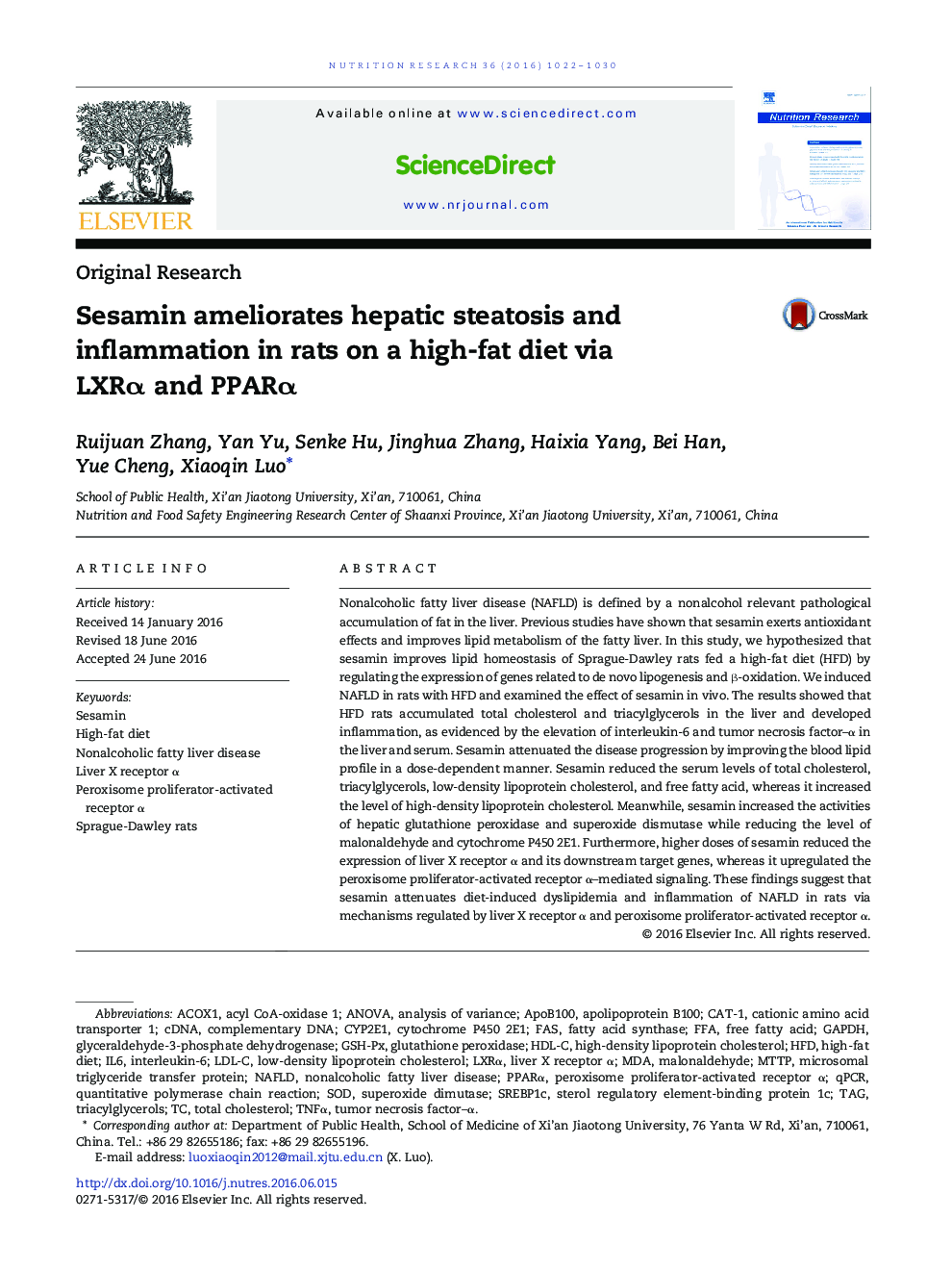| Article ID | Journal | Published Year | Pages | File Type |
|---|---|---|---|---|
| 2808809 | Nutrition Research | 2016 | 9 Pages |
Nonalcoholic fatty liver disease (NAFLD) is defined by a nonalcohol relevant pathological accumulation of fat in the liver. Previous studies have shown that sesamin exerts antioxidant effects and improves lipid metabolism of the fatty liver. In this study, we hypothesized that sesamin improves lipid homeostasis of Sprague-Dawley rats fed a high-fat diet (HFD) by regulating the expression of genes related to de novo lipogenesis and β-oxidation. We induced NAFLD in rats with HFD and examined the effect of sesamin in vivo. The results showed that HFD rats accumulated total cholesterol and triacylglycerols in the liver and developed inflammation, as evidenced by the elevation of interleukin-6 and tumor necrosis factor–α in the liver and serum. Sesamin attenuated the disease progression by improving the blood lipid profile in a dose-dependent manner. Sesamin reduced the serum levels of total cholesterol, triacylglycerols, low-density lipoprotein cholesterol, and free fatty acid, whereas it increased the level of high-density lipoprotein cholesterol. Meanwhile, sesamin increased the activities of hepatic glutathione peroxidase and superoxide dismutase while reducing the level of malonaldehyde and cytochrome P450 2E1. Furthermore, higher doses of sesamin reduced the expression of liver X receptor α and its downstream target genes, whereas it upregulated the peroxisome proliferator-activated receptor α–mediated signaling. These findings suggest that sesamin attenuates diet-induced dyslipidemia and inflammation of NAFLD in rats via mechanisms regulated by liver X receptor α and peroxisome proliferator-activated receptor α.
